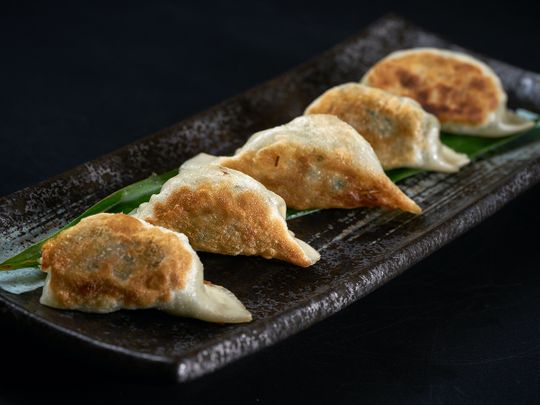
Who doesn’t love dumplings? These little packages, packed with flavour, have been delighting foodies for centuries, all around the world.
Click start to play today’s Crossword, where you can find a specific kind of dumpling that’s originally from Tibet. Don’t forget to check out Gulf News’ Food section for guides, recipes and more.
In Italy, it’s dressed as ravioli, and in Poland, as piroshky. When you’re in China, you’ll eat them as pot stickers and in Nepal and Tibet, you’ll dunk momos in some sauce. In Ghana, people make fufu from pounded cassava flour, while in Brazil, many enjoy empanadas. A universal food like no other, nearly every culture makes some form of dumplings, whether boiled, steamed or pan-fried.
You’d be surprised to learn that these humble pockets of flavour are an ancient food. Recipes for dumplings appear in Roman texts, according to History.com, and Chinese forms of dumplings go back even further.
Historians believe that, like bread, dumplings arose independently in several different cuisines. In most cases, they were a way of making a small amount of meat go a long way, so that more people could enjoy it. A plate of mutton, for instance, may not be enough for a hungry family of four. But you could mix it with some cabbage and onions, and wrap it up in dough, and it would make for a satisfying meal.
Apicius, a collection of Roman recipes from the fifth century AD, has more than one recipe for dumplings within its texts. A recipe about a roasted pheasant dumpling, for instance, asks the reader to chop it fine, mix it with fat, salt and pepper, moisten it with broth and then poach it in seasoned water.
Even today, simple boiled dumplings like the one in Apicius, are enjoyed in parts of Europe. Austrians, for instance, soak days-old bread in milk and mix it up with other leftover ingredients to form dumplings. In Germany, spaatzle is a flour dough pushed through a sieve directly into boiling water.
It’s worth noting however, that these initial dumplings were not stuffed. Filled dumplings came about later in Europe, but Chinese cooks had been enjoying a version called jiaozi for more than 1,800 years. Legend has it that stuffed dumplings were invented in China during the Han Dynasty, by a man named Zhang Zhongjian.
Zhang returned to his ancestral village in the winter, after being away for years. When he arrived, he noticed many of his neighbours were suffering from frostbite, especially around the ears. In order to solve this problem, Zhang cooked mutton, chilli and healing herbs and wrapped them in scraps of dough, shaped to look like little ears. He boiled the dumplings and distributed them among the frostbitten locals. Nobody knows if his ‘treatment’ helped cure their frostbite, but the villagers loved the taste of these little dumplings so much, they kept making them long after winter turned into spring.
If you're craving dumplings after this journey into their history, try your hand at Japanese gyoza, Lebanese shish barak (dumplings in yoghurt gravy), or Maharashtrian mongoori (rice dumplings in sweetened coconut milk).
Do you like dumplings? Play today’s Crossword and tell us at games@gulfnews.com.





